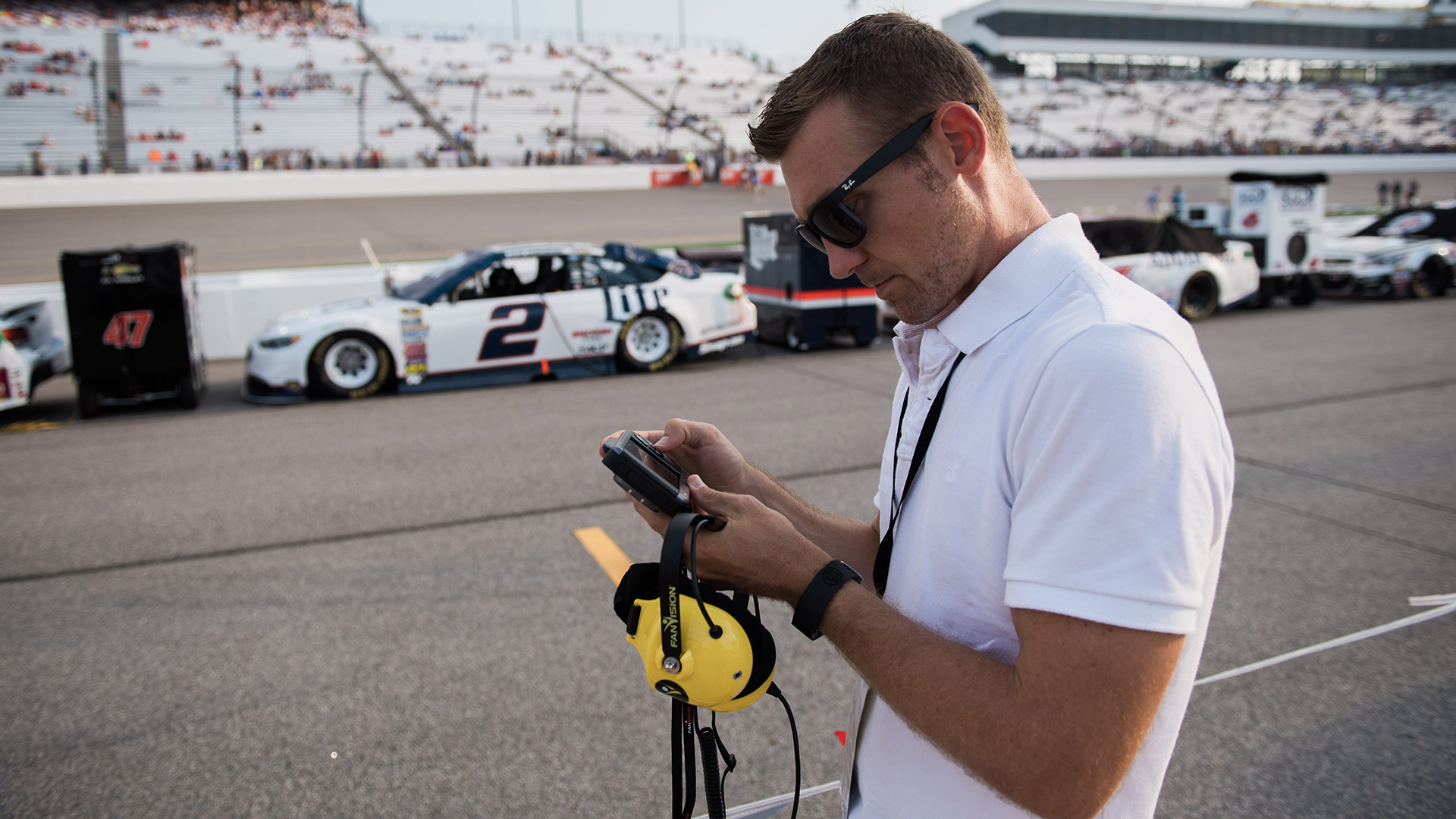TechRadar Verdict
For analytics geeks, there's simply no event companion more enthralling.
Pros
- +
Gives you access to loads of data
- +
Outstanding battery life
- +
Doubles as ear protection
Cons
- -
Only available for motorsports
- -
Relatively pricey hardware
- -
No benefits outside of the venue
Why you can trust TechRadar
FanVision is, in some ways, difficult to explain. We've struggled to boil it down to a single sentence, primarily because its value is best realized when you take advantage of everything it offers. As simply as possible, FanVision is a handheld screen and radio network, which allows patrons attending a live sporting event to dive far deeper into what's happening in real-time than those who are left to use their own two eyes. For analytics geeks, there's simply no event companion more enthralling.

We recently had a chance to put FanVision to the test at a pair of NASCAR events. The two venues couldn't be more dissimilar – the first race was a road course in Sonoma, Calif., while the second was a three-quarter mile thriller in Richmond, Va. As of now, FanVision's only major consumer touch point is in motorsport (NASCAR, NHRA, IndyCar), despite once being available at NFL stadiums and F1 races. We'll touch a bit on that later on in the review, but we wanted to start by painting a picture of how the system actually works.
How it works
- Charge it up before race day
- Make sure you have a subscription for the event you're attending
- Power it on, and the connection to the FanVision network is automatic
At each sporting event where FanVision is supported – NASCAR races, in our case – the company erects a wireless network that each of its handhelds connect to. If you have a FanVision display and a subscription (also referred to as an activation) to the event you're at, you're golden.

It's vital to charge your FanVision fully ahead of an event. While the battery is good for around six hours, even with the display glaring the entire time, you don't want it to peter out mid-race. Once you're at the venue, you just boot the unit up, wait around 30 seconds for it to automatically connect to the FanVision network, and start diving in.

It's surprisingly simple to dive into. We're always wary when it comes to products that a) have to connect to a wireless network where tens of thousands of people are gathered and b) claim to "just work." Much to our amazement, the FanVision unit connected immediately and maintained a faultless signal throughout both races that we attended.
In-race benefits
- You're giving access to real-time audio streams of your favorite athletes
- On screen, there's loads of data to analyze and enjoy in real time
- You have access to information that others don't, and that just feels so, so satisfying
So, it's easy to use. Awesome. But, what does it actually do? In a nutshell, it massively enhances the live event experience, and somehow, manages to not get in the way of actually savoring the event itself. We've all seen the guy or gal totally missing the moment due to being buried in a screen (typically a smartphone, but occasionally a Tamagotchi), but FanVision isn't that.
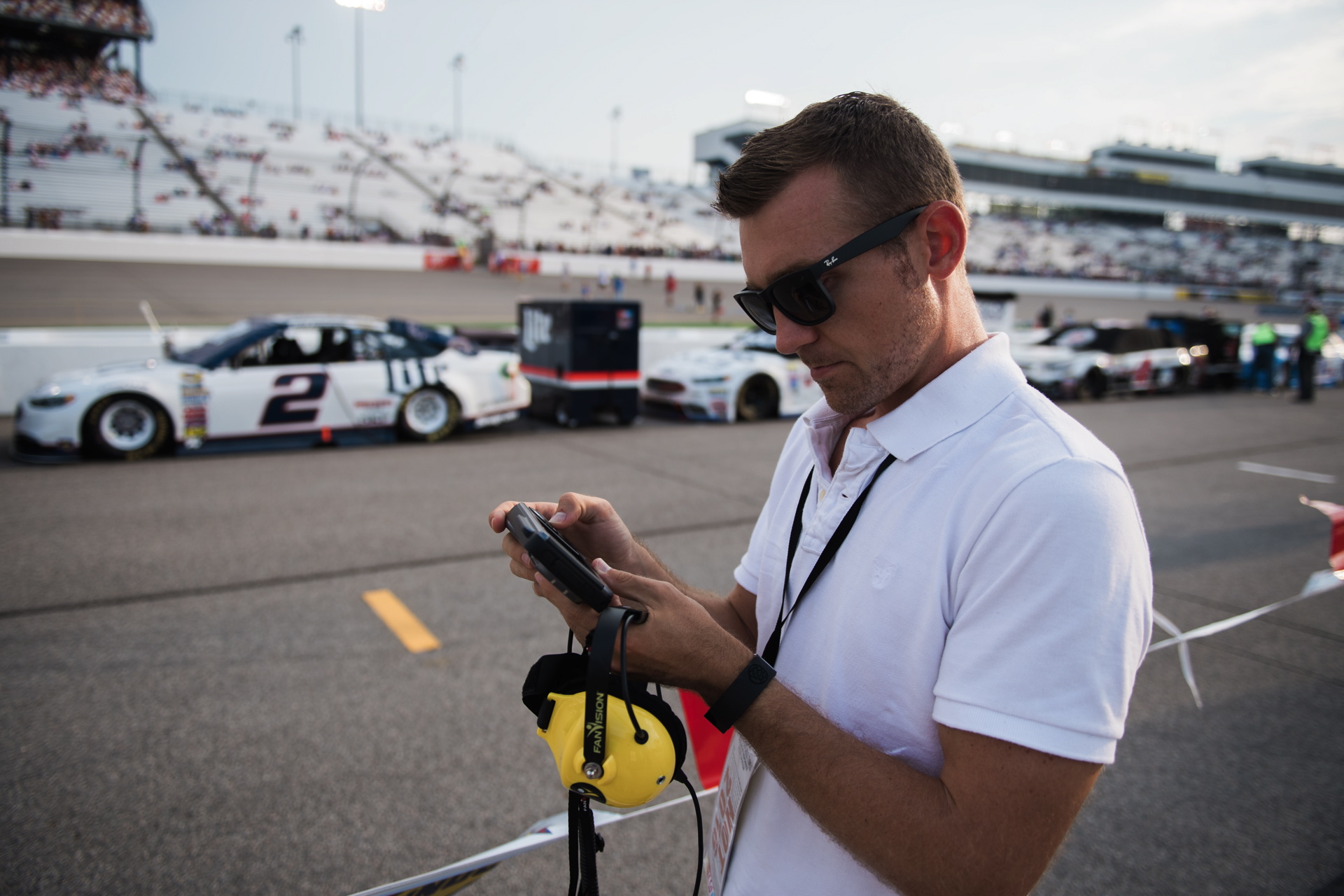
It probably helps to get a bit of background on how motorsport is conventionally enjoyed. You see, these vehicles emit decibel levels that'll darn near deafen you if you sit in the stands for hours without ear protection. So, most folks bring their own earplugs, which do a wonderful job of ensuring that you can still hear your neighbors yelling at you when you're 70. Regrettably, they also do a lovely job of removing you from the excitement, giving your mind plenty of time to ponder how few Pokemon you've managed to catch in the past week.
Sign up for breaking news, reviews, opinion, top tech deals, and more.

FanVision reckons that if you're going to wear ear protection, you might as well pump something extra into your ear canal at a safe decibel level. Hardcore race fans know that they can bring their own scanners to the track in order to hear the banter that occurs between driver and pit crew, but FanVision takes that to an entirely different level.

When booting the unit up, you're given the opportunity to select up to three favorite drivers. Then, inside the Scanners pane, you can easily toggle between in-race communications from those drivers and the main race commentary that covers the entire field. Crucially, FanVision can automatically pipe in the main race commentary by default, and then cut to your driver's scanner whenever they (or their pit crew) begin conversing.

So, as you're sitting in the stands ogling the action, you're getting an earful of commentary and/or insider information directly from the driver you're pulling for. The experience is as close to getting inside of the car as you're going to get, and quite frankly, it's enrapturing.
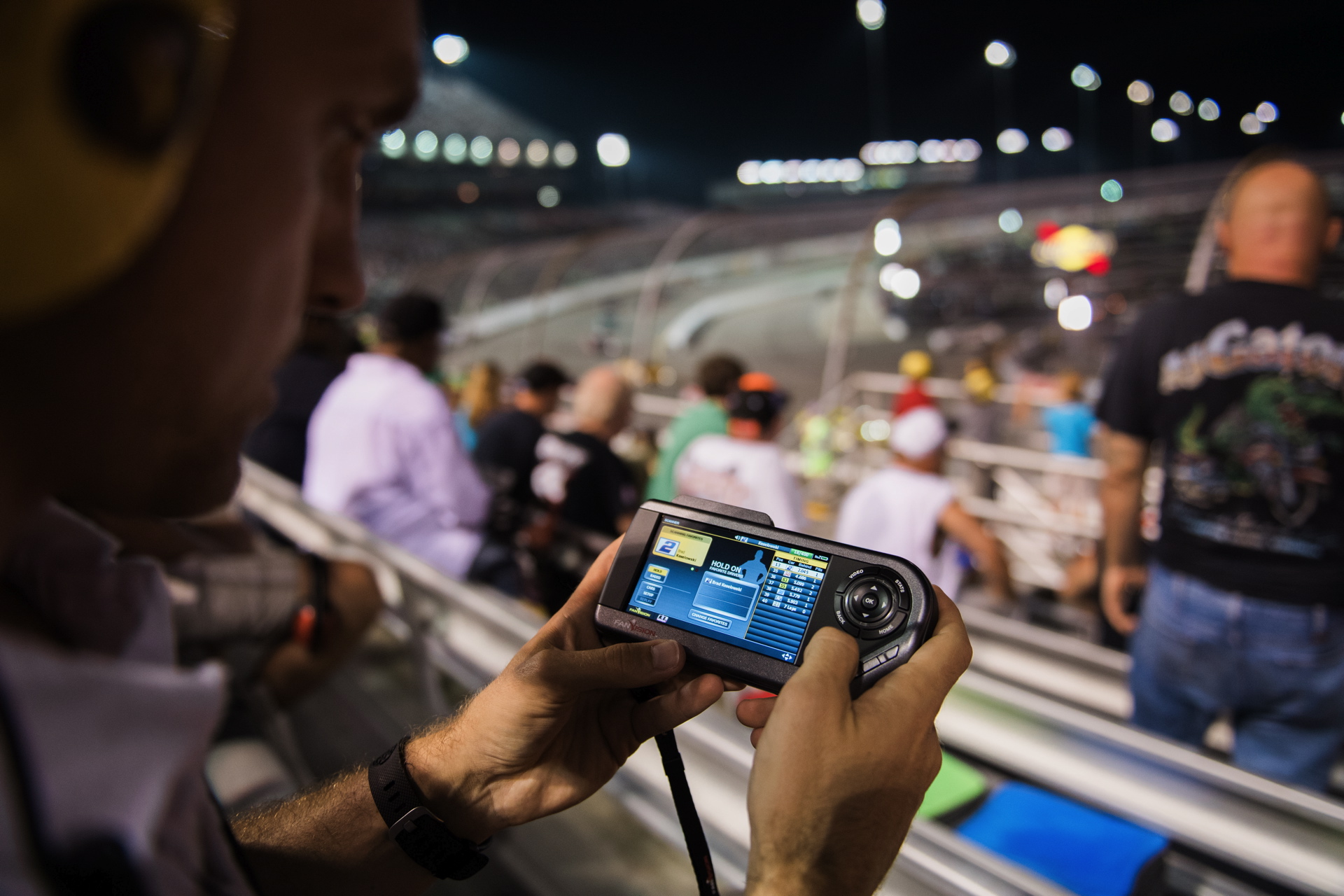
In the two races we attended, we had Team Penske earmarked as favorites: Brad Keselowski and Joey Logano. Considering that both of these drivers are – shall we say, dominant – they proved to be quite exciting to watch. Phase 1 is the rush of hearing insider chatter between driver and pit crew, where they discuss topics like steering adjustments, plans for their next pit stop, timings of drivers that are in front of and behind them, and if they're clear on the top or bottom lane to complete a pass.
For statistics and analytics nerds, there's really nothing better. You're getting a live, unfiltered, real-time listen at the brain of a professional athlete as he or she corresponds with the engineers responsible for giving them an edge on the track.

Phase 2 is the on-screen goodness. We spent most of time on the video feed at the Sonoma road course, but in Richmond – where you can see every turn from practically every seat in the grandstands – we kept it locked on the leaderboard. Here, your favorite drivers are fixed up top, with the rest of the grid listed below in order of position. Last lap time, total pit stops, and time behind the driver ahead of them is all listed out. It's a veritable smorgasbord of data, giving math junkies plenty to chew on as they extrapolate how many laps it'll take a driver to pass another if they continue catching up at their given pace.

FanVision is an incredible addition at round tracks like Richmond International Raceway, but it's simply vital at road courses like Sonoma Raceway and Watkins Glen International. With road courses, no one seat is given a view of the entire race. So, oddly, there are moments when a pack of cars zoom by, and then a number of awkward seconds that roll by before you see them come around again to your vantage point. Here, FanVision shines brightest. The video functionality pipes live footage from all corners to your screen, enabling you to never lose sight of the grid – even after they've left your actual purview.
Acquiring a FanVision unit
- You can rent ($50/race) or buy ($300) a FanVision display
- Renters can rent and return right at the venue
- You can use your own earphones or headsets if you'd rather

FanVision sells its controller for $300, which includes a subscription to every race in the NASCAR season. You'll have to pony up a bit more if you're after a sound-reducing, speaker-infused headset, but the good news there is that it's not proprietary. Unlike Apple's iPhone 7 (ahem), the FanVision display has a standard 3.5mm headphone port. You can pick up your own headset on Amazon or elsewhere, and a headphone splitter works wonders if you're attending a race with a friend and want them to share in the excitement.
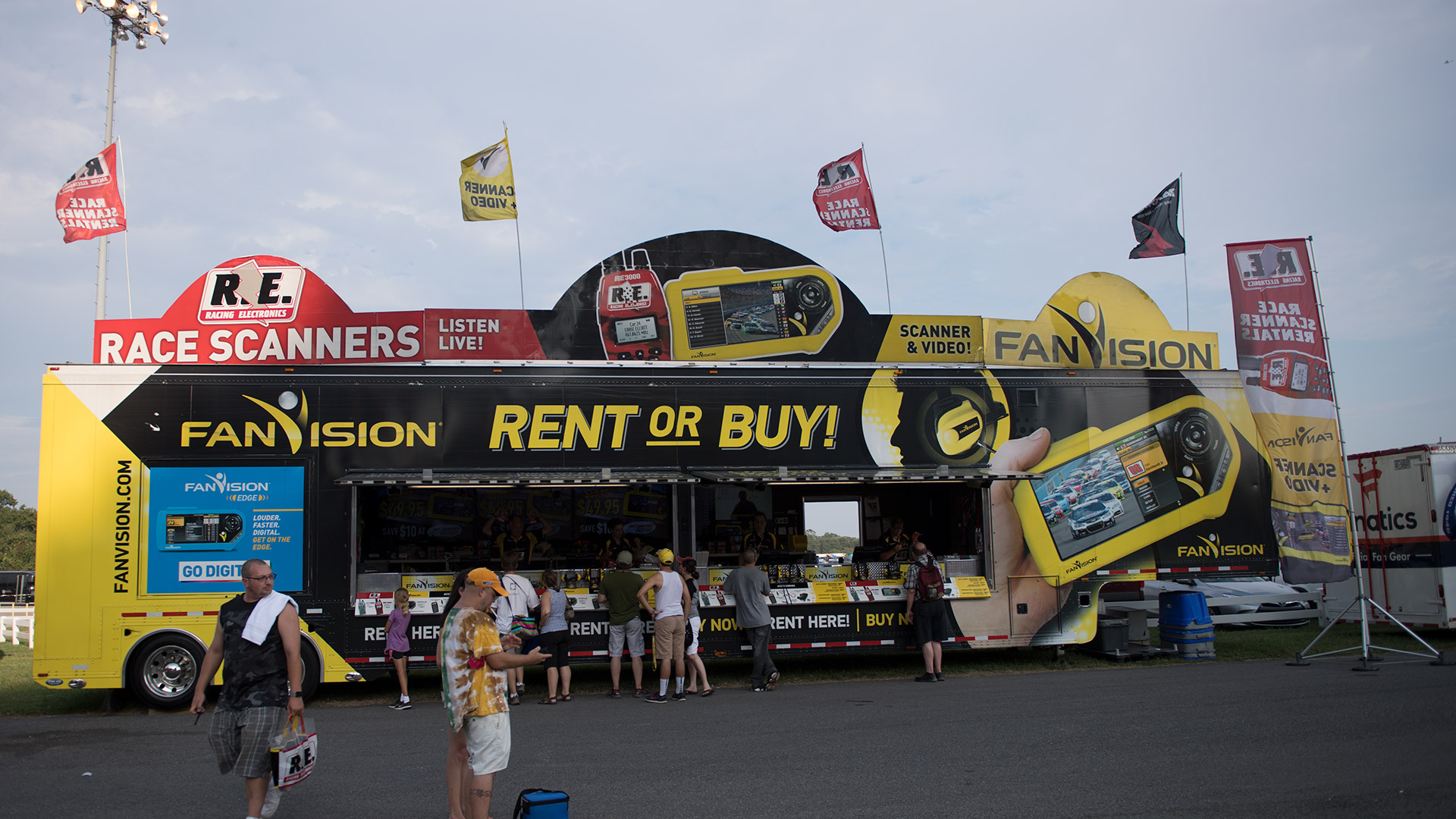
If you're more of an occasional fan, FanVision rents its display and a single headset for $50 per race weekend, which gets you access to every NASCAR-affiliated event over a three-day span. If you want to double up and get a second headset, tack on $15. If you plan on attending a half-dozen events over the course of a season, you're better off buying the hardware.
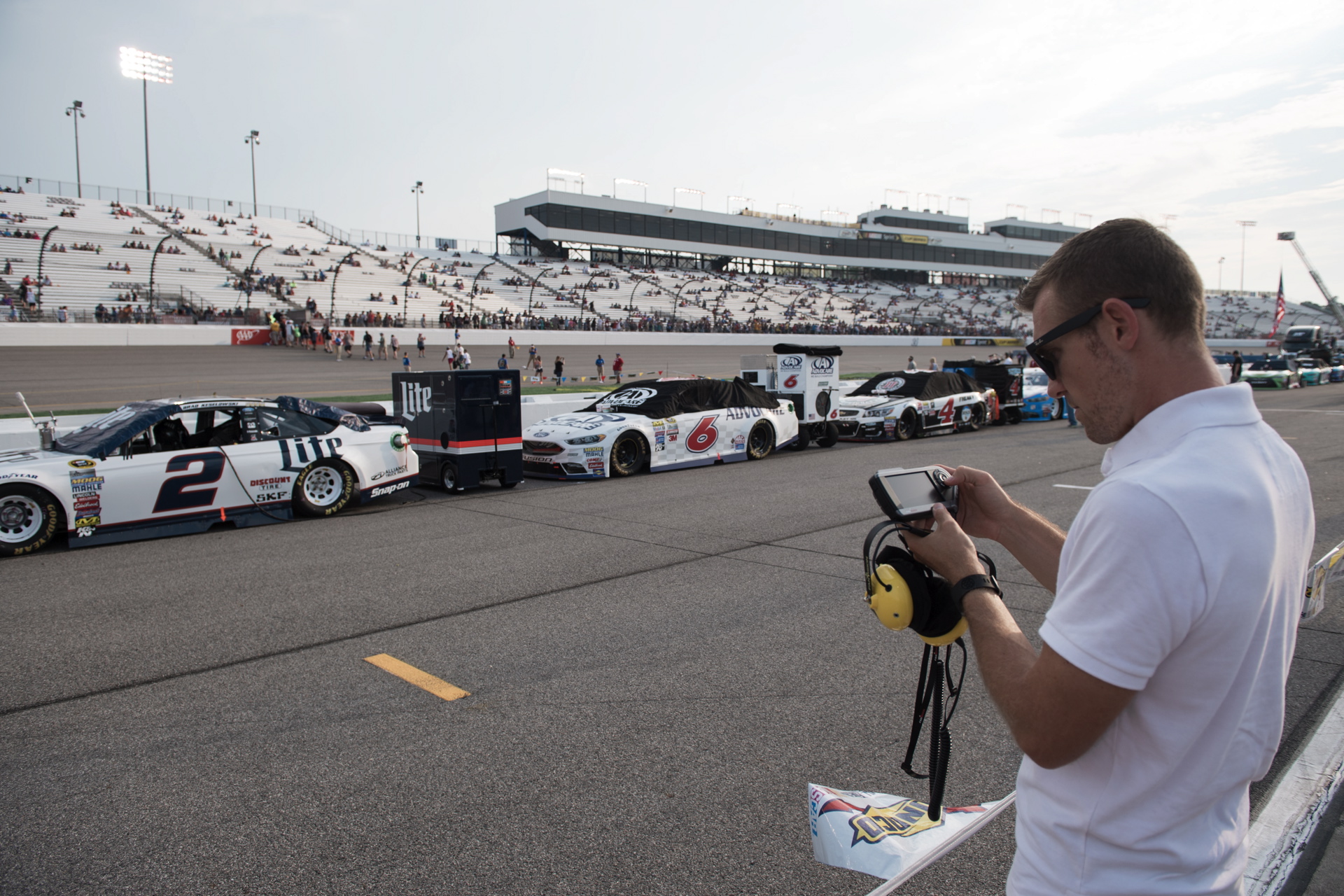
At the venue, FanVision has unmissable trailers established on various sides. We noticed around four or five per event, with six or so registers per trailer. Most patrons waited less than five minutes to be served, and those who had pre-ordered a rental online ahead of the event were in and out in just seconds. For what it's worth, we'd strongly recommend pre-ordering if you're certain you're going to an event; you'll save $10 or so, and everything's waiting for you upon arrival.

After the race, you simply return your rental gear in the bag that it was given to you in. While we expected long return lines, that process took around three minutes. Despite huge crowds, FanVision's event staff seemed to be a well-oiled machine, taking the hassle out of renting and returning in the same day.
For the Richmond race, we procured a FanVision unit ahead of time, which was even better. No stopping at a trailer before or after – just show up at the race, turn it on, and enjoy.
Enhancing the experience

Before we dive in too deep here, it's worth reiterating just how seamless the FanVision experience is. The connection is immediate and solid, and the battery is seriously impressive. We still had around 20 percent remaining after a 4.5-hour overtime race in Richmond. The audio feed is delayed, at most, half a second, which is close enough to real-time that it's imperceptible in practice. The video feed doesn't stutter not one iota.

What's most remarkable is just how well the entire streaming process works; it contrasts starkly with our iPhone 6S Plus sitting just beside it, which can't even get an Instagram post through due to network saturation that occurs so frequently at huge events.

We were able to compare the NASCAR Sprint Cup Series race in Richmond from 2015 (where we didn't have FanVision) to the exact same race in 2016 (where we did have FanVision). The difference is significant, to the point where we wouldn't recommend splurging on a NASCAR weekend without also budgeting for FanVision. Feeling the earth rumble as 40 high-powered motorcars scream by at breakneck speeds is never not going to be awesome, but the wealth of additive data – from driver-to-crew audio to mounds of real-time lap data – instantly spoils you.

Rather than wondering how fast a given driver is catching up to another driver, a glance at FanVision provides the answer. It's important to point out the operative word there: glance. FanVision is perhaps the most glanceable piece of glanceable technology we've ever used, and therein lies the charm. You aren't expected or required to keep your face buried in the screen as the event unfolds in front of you. The designers realized from the jump that FanVision would only be enjoyable if it could provide vital information and answer race-related questions at a glance, and that's exactly what it accomplishes.

Couple that with the face that the obvious alternative – trying to find this data via your smartphone – only really works if you're using Sprint, and it becomes even more alluring. (For those unfamiliar with NASCAR events, Sprint is the lead sponsor. Mysteriously, Sprint also seems to be the only carrier with a functional network at NASCAR events. We'll get Scooby-Doo on the case post-haste.)
Second screen questions

In our estimation, the value proposition of FanVision is undeniable at a NASCAR event. Yeah, it roughly doubles the cost of attending for a single person (as it's typically possible to nab a seat for around $50), but we'd say that the enjoyment and immersion is roughly doubled as well.

You need to be a fan to really enjoy the real-time audio and data, of course, but that's why "fan" is right there in the name. If you're just attending a live sporting event in order to fill a void in your Saturday or Sunday night, it's a toss up. We could totally see FanVision pulling you even closer to a sport that you didn't know you were into, but there's also a certain amount of understanding required to appreciate the sheer quantity of information that's at your fingertips.
But, if FanVision is so great, why isn't it supported at NFL and F1 any longer? And why haven't we heard anything about expanding into arenas beyond motorsport? It feels like the idea compassion for MLB, for example, which tends to inject a lot of lulls between action events.
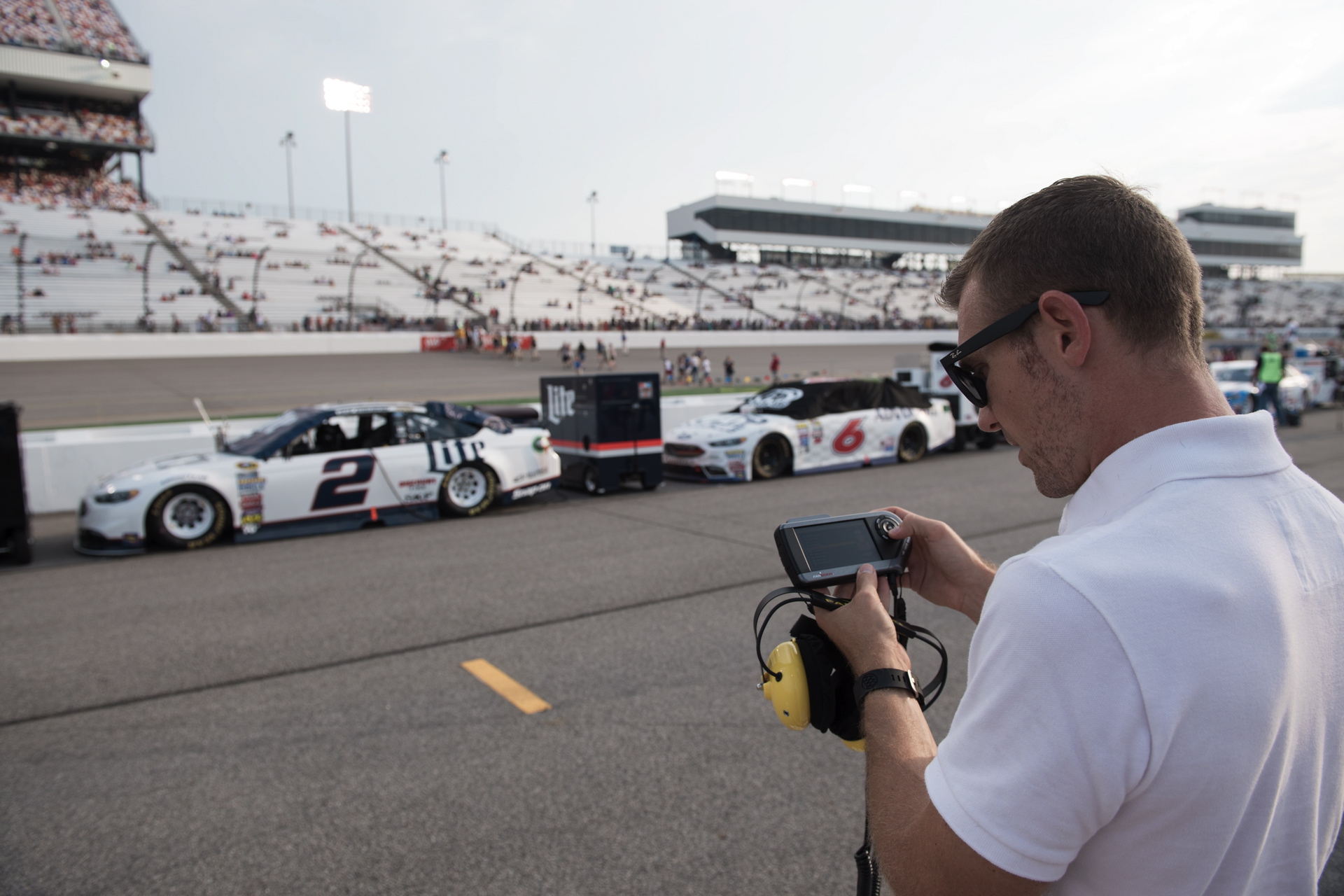
Part of the challenge is the proliferation of the smartphone. It's easy to argue that patrons of sporting events already have the hardware in their pocket to do the things that FanVision does. If you show up with an iPhone in hand, what's the benefit of bringing yet another piece of proprietary hardware? As of now, we can see only two: better battery life, and easier access to a high-speed, flicker-free network stream of information.

There's no question that sporting leagues the world over are spending a lot of resources to enhance the fan experience. Ticket prices are skyrocketing, and marketing departments are pushing dedicated apps, hashtags, etc. to bring fans closer to the teams they favor. It remains to be seen if there's room in an increasingly mobile world for dedicated hardware.

Perhaps FanVision can pivot into an apps and services company that works on the phone you're already bringing into an arena, but solving the network infrastructure problem won't be an easy one. Conventional cellular networks struggle mightily in crowds, and even the beefiest of enterprise routers have a tough time handling petabytes of data from tens of thousands of devices crammed within a single stadium.

In the here and now, however, FanVision is a no-brainer if you're a fan of motorsport. Strange as may sound, it's impressive enough to justify lugging yet another gadget into a venue. Just be sure to do yourself a favor and tune into Team Penkse – those guys are good.

